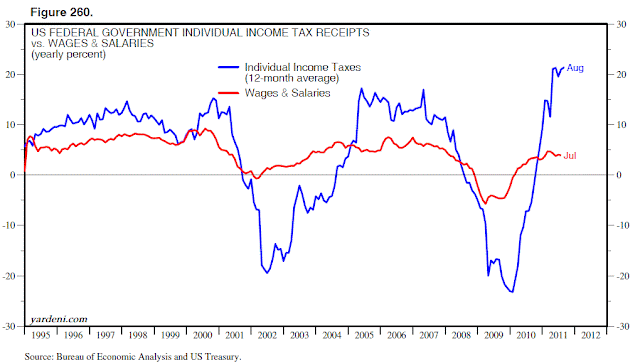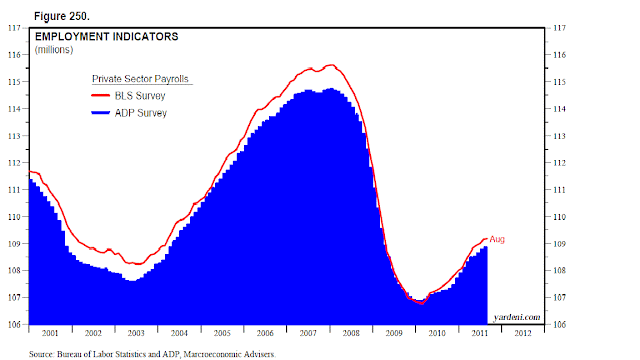Investors aren’t the only ones who are struggling to assess the Euro-Mess. This problem has unsettled business planners around the world, as evidenced by lots of weakening global business indicators. On Monday, October 3, purchasing managers surveys for September will be released for most of the major economies. Preliminary surveys released last week suggest that most purchasing managers indexes remained relatively weak around 50. If so, that would be consistent with positive, but rapidly slowing, growth in corporate earnings.
In the upcoming earnings season, I expect that the S&P 500 companies will report that their aggregate earnings totaled $23.25 per share, up 6.9% y/y. A year ago, this growth rate was 32.9%. Two weeks ago, the bottom-up consensus was $25.04, up 15.1% y/y. This estimate has declined from a peak earlier this year of $25.63 (up 17.8% y/y) during the week of June 3.
During the past nine earnings seasons, there was also a tendency for analysts to lower their estimates for the quarter in the weeks just before the start of the earnings season. In each quarter, their downwardly revised estimates were easily beat by reported earnings. This time, the downward revisions have been more pronounced over the past few weeks. Also this time, Joe and I expect that the consensus is going into the earnings season with estimates that may be too high rather than too low.
Speaking of revisions, the S&P 500’s consensus earnings estimate for 2012 fell again last week, for the seventh consecutive week, to $111.33. Forward earnings has been flat for the past seven weeks. Contributing most to the downward revisions is the Financials sector. The chart below shows the percent changes in the 2012 earnings estimates for the sector and six of its major industries. Here are the highlights: (1) The 2012 consensus estimate for the S&P 500 Financials was down 8.9% ytd during the week of September 15. (2) The worst- to best-performing industries based on the ytd changes in earnings expectations are Investment Banking & Brokerage (-21.2%), Other Diversified Financial Services (-16.3), Asset Management & Custody Banks (-10.1), Diversified Banks (-5.4), Regional Banks (-2.2), and Consumer Finance (+13.8). |































